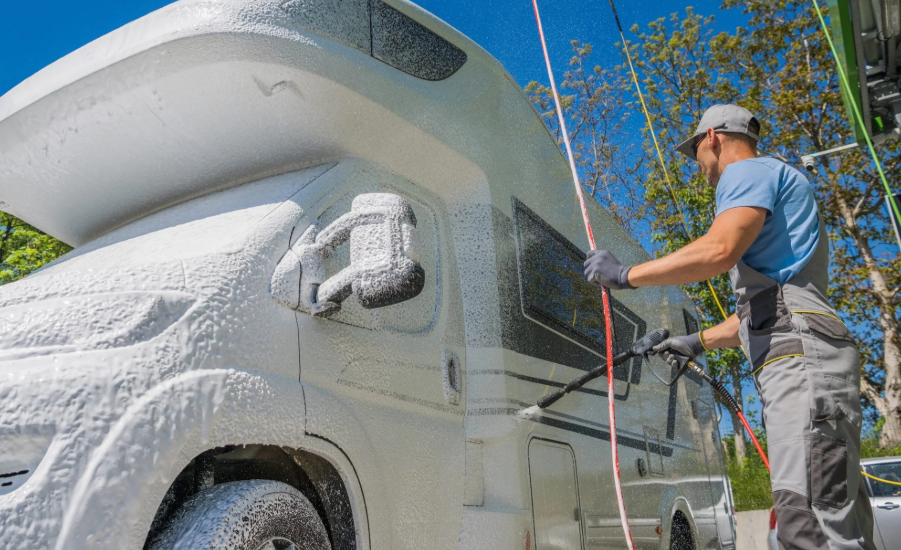How to Prepare Your RV for a Seasonal Inspection
Owning a recreational vehicle (RV) is a great way to explore the outdoors with the comforts of home. However, to keep your RV in top condition and ensure it’s road-ready, regular maintenance and inspections are crucial. One of the most important steps is conducting a seasonal inspection—a comprehensive review of your RV before each major travel season, especially spring and fall. Whether you’re a full-time RVer or a seasonal adventurer, preparing your RV for a seasonal inspection can save you money, prevent unexpected breakdowns, and extend your vehicle’s lifespan.
1. Clean Your RV Thoroughly
Before starting any inspection, give your RV a thorough cleaning, inside and out. Dirt, dust, and debris can hide potential issues. Washing the exterior helps you spot cracks, rust, or sealant failures. Inside, clean all appliances, cabinets, and floors to identify leaks or pest infestations that may have occurred during storage.
2. Inspect the Roof and Seals
The roof is one of the most vulnerable parts of your RV. Check for cracks, soft spots, or punctures in the roofing material. Examine roof vents, air conditioners, and skylights, ensuring all seals and caulking are intact. Water damage can go unnoticed until it’s too late, so pay close attention during this part of the seasonal inspection.
3. Check Tires and Suspension
RV tires can degrade even when the vehicle isn’t being driven regularly. Check for cracks, bulges, uneven wear, and proper inflation. Also, inspect the suspension system and brakes for signs of wear or corrosion. Be sure the lug nuts are tight and that you have a spare tire in good condition.
4. Test the Electrical Systems
Start by reconnecting your RV to shore power or a generator. Check all interior and exterior lights, outlets, the battery charge, and your converter or inverter. Test the smoke detectors, CO detectors, and fire extinguishers to ensure safety systems are operational. Don’t forget to test the generator and inspect wiring for rodents or corrosion.
5. Examine the Plumbing System
Inspect all faucets, showerheads, water lines, and holding tanks. Look for signs of leaks, mold, or mineral buildup. Run water through all systems and check the water pump functionality. If you use antifreeze during the winter, flush the system completely. Make sure the water heater is operational and clean if necessary.
See also: How 3D Printing Is Changing the Construction Industry
6. Inspect HVAC Systems
Your RV’s heating and cooling systems need to be tested for performance and cleanliness. Turn on the air conditioner and furnace to ensure they run properly. Clean or replace air filters, and check all vents for obstructions. If you have a propane system, check for leaks using a gas leak detector or soapy water solution.
7. Check Slide-Outs and Awnings
Slide-outs and awnings are often overlooked during inspections. Operate each slide-out fully and inspect the seals and motors for signs of wear or damage. Clean and lubricate the mechanisms if needed. For awnings, check for tears, mold, or broken parts.
8. Review and Update Documentation
Make sure your registration, insurance, and maintenance records are up-to-date. Many RV service centers will ask for these before conducting a professional seasonal inspection. Keeping a detailed log of repairs and past inspections can also help catch recurring issues early.
9. Schedule a Professional Inspection
Even if you perform a thorough self-inspection, having a certified RV technician look over your vehicle can offer peace of mind. They can identify issues you might overlook and help with advanced diagnostics. This is especially useful before long trips or if your RV has been in storage for several months.
Final Thoughts
A seasonal inspection isn’t just about compliance or checklists—it’s about making sure your RV is safe, efficient, and enjoyable to use. By preparing your RV for a seasonal inspection, you not only catch potential problems early but also gain confidence in your next road trip. With regular upkeep and a keen eye for detail, your RV can continue to deliver memorable adventures for years to come.

